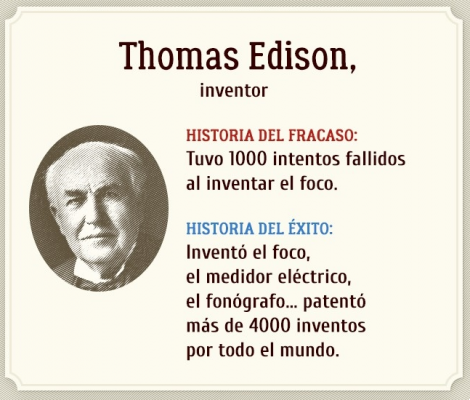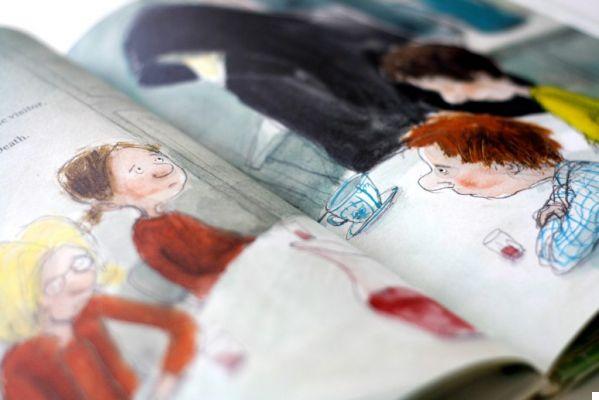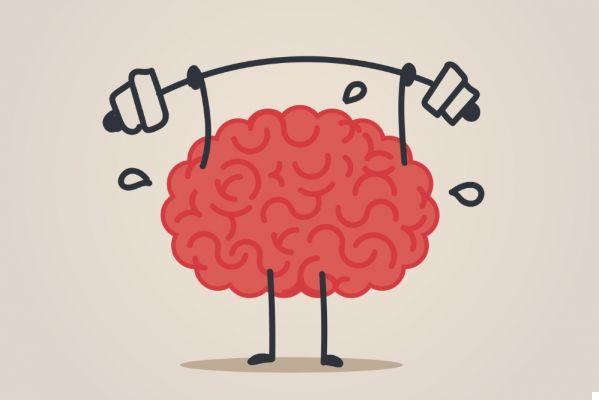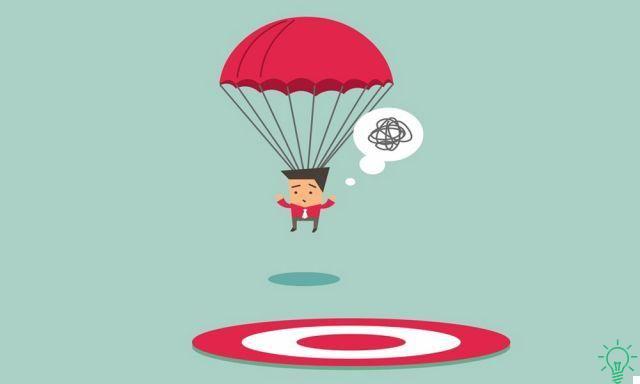
“You can't keep problems from knocking on your door, but you don't have to offer them a chair to make them comfortable,” said Joseph Joubert, an XNUMXth-century French essayist. Unfortunately, however, we often do just the opposite, we remain prisoners of circumstances and we do not realize that when things go wrong we are not obliged to go with them, we must not let ourselves be carried away. Sometimes the solution to problems is simple, such as changing your point of view and not being trapped by negative thoughts.
You see the world as you feel, not as you are
In life nothing is eternal, everything passes. Worrying or mortifying yourself will not make the problems go away faster, on the contrary, it is like offering them a comfortable sofa to get comfortable on.
Unfortunately, when we are faced with some setbacks, they generate a strong emotional response that blurs our sight. In fact, a very interesting study conducted at the University of Freiburg revealed that depression makes us see the world more gray, literally, because it affects the electrical response of the cells of the retina, which are responsible for the "vision of contrasts".
Similarly, another experiment conducted at the University of Bristol found that anxious people have difficulty detecting emotions in the facial expressions of others and often only see anger. This tells us that when emotions take over, it is more difficult for us to see the world as it really is.
When faced with a problem, it is as if we suddenly have tunnel vision that prevents us from seeing the whole picture. So it's very easy to get carried away by circumstances and adopt a negative and alarmist thinking, so we let the problems drag us along with them.
3 effective techniques to get out of the current that drags you
1. Don't fight your emotions, assume them
Emotions are not negative in themselves, they are very important messages that you need to learn to listen to. In fact, you can't avoid feeling sad when something bad happens or getting angry when you see someone doing an injustice. There is nothing wrong with that. The problem starts when you let emotions take control and blur your vision. In these cases, a full-blown emotional abduction occurs, and fighting against it is usually counterproductive, it's like swimming against the current, it will exhaust you, you will not be able to advance. So, the wisest thing to do is to be aware of what you are feeling and let it go.
A trick that helps many people understand this idea comes from Buddhist philosophy and is to equate emotions in your eyes. You can't control everything you see in every moment, every moment you are bombarded with thousands of visual stimuli, but they usually don't bother you. Take note and look away to focus on what really matters to you. You can do the same with emotions. By taking away some of the impact, they will affect your perspective of the problem less.
2. Become a cognitive restructuring expert
Emotions aren't the only ones that influence your perspective on the problem, they also affect your beliefs, expectations and thoughts. If you have developed a castastrophist thinking style over the years, it will automatically activate whenever you have to deal with a problem. So, in order not to get carried away by the current you must also pay attention to your thoughts.
Cognitive restructuring, a very effective technique of cognitive-behavioral therapy, is used to identify and correct negative thinking patterns. The first step is to monitor any automatic negative thoughts that come to mind and generate emotional stress and frustration, such as: "I'm a mess, I'm not going to be able to fix it." This thought should be replaced by a more functional one, such as: “with a little patience and serenity I will be able to solve the problem”. As you can see, it's not about resorting to unrealistic and naive positive ideas, but taking a more realistic attitude.
However, this technique is not limited to just replacing one thought with another, so it would be ineffective, because the mind does not allow itself to be fooled so easily. The important thing is to question the validity of those automatic negative thoughts until you understand that they are incorrect generalizations. Look for the source of these thoughts and find situations in your life that they don't apply to. As you face these thoughts and question their validity, they will gradually become weaker and weaker.
3. Distance yourself from the problem by moving into the past and the future
“We can't solve a problem by continuing to think the same way we created it,” said Albert Einstein. To get out of this negative cycle it is necessary to change perspective. It is essential that we establish an emotional distance. To understand exactly what this means, imagine that the problem is a tapestry. You do not understand what is happening, and how to fix it, because you are looking from below, under the tapestry, and you see only a tangle of meaningless threads. However, what happens if you turn it upside down and look at the tapestry from above? Suddenly it all makes sense, because you have changed the perspective and now you have a more global vision.
The benefits of establishing emotional distance from problems have been extensively studied in psychology. A study conducted at Cornell University found that when we establish a psychological distance, the problems seem simpler to us. Another research conducted at Columbia University revealed that psychological distance allows for self-control and helps reduce emotional responsiveness.
There are several techniques that help establish this emotional distance, one of the simplest and most effective is "the time traveler" as it also activates your natural healing and resilience resources. Basically, just imagine that you can travel through time. Search your past for a situation that has worried you a lot and made you feel bad. Enhance it with the eyes of the present. You will notice that many of your concerns have been trivial. Now imagine moving into the future, five or ten years, and look back at the problem you are experiencing today. Ask yourself if it is necessary or smart to approach it this way.
Finally, don't forget that when things don't go your way, you don't have to go with them, take them where you want them to go.


























